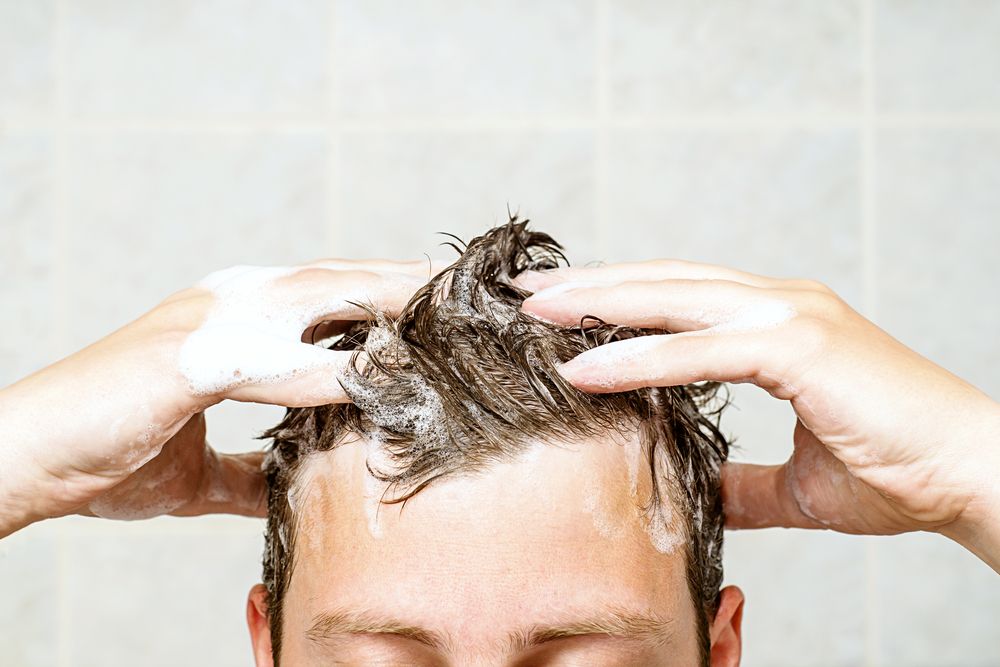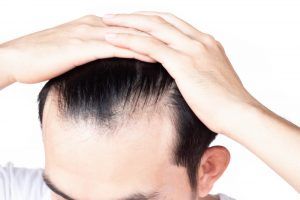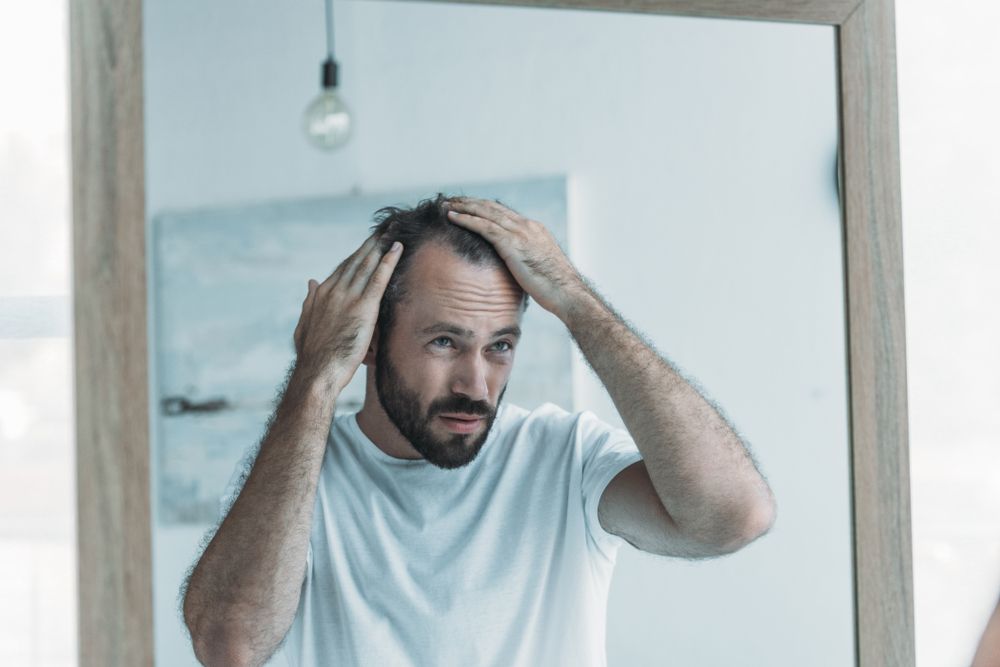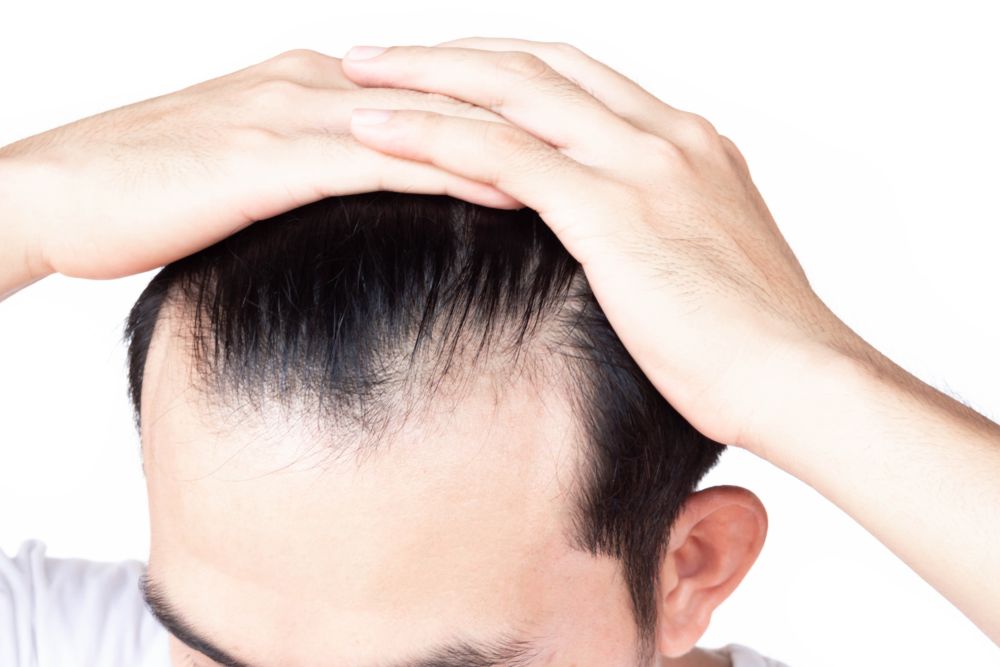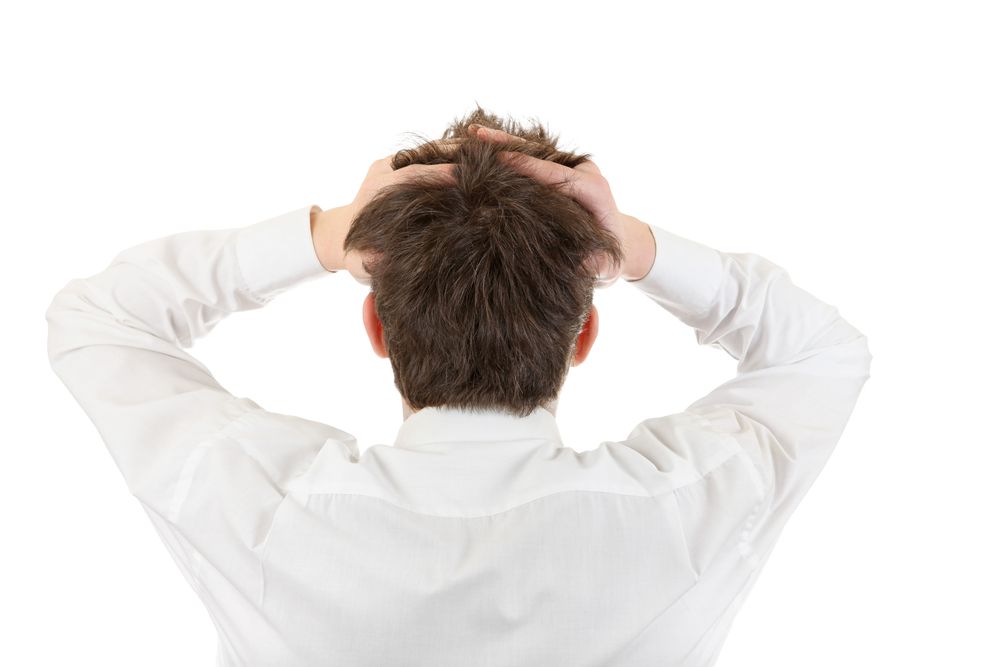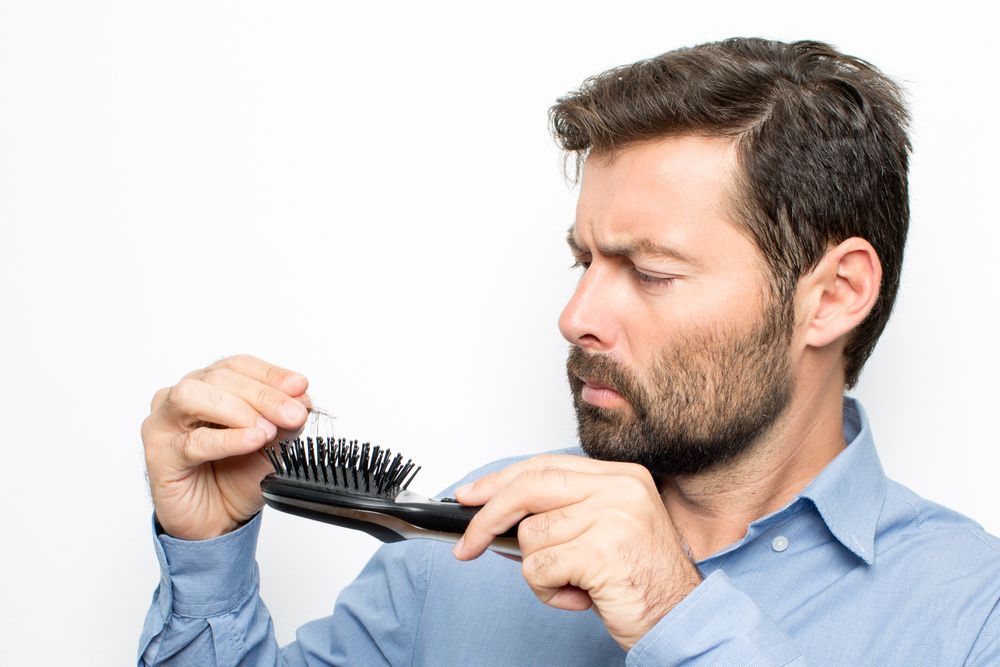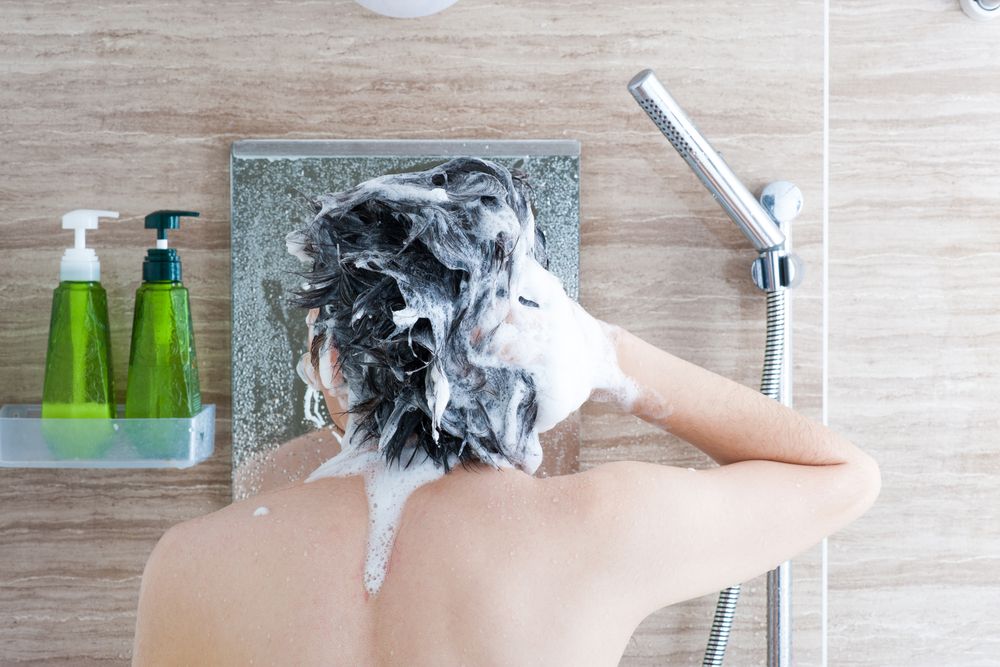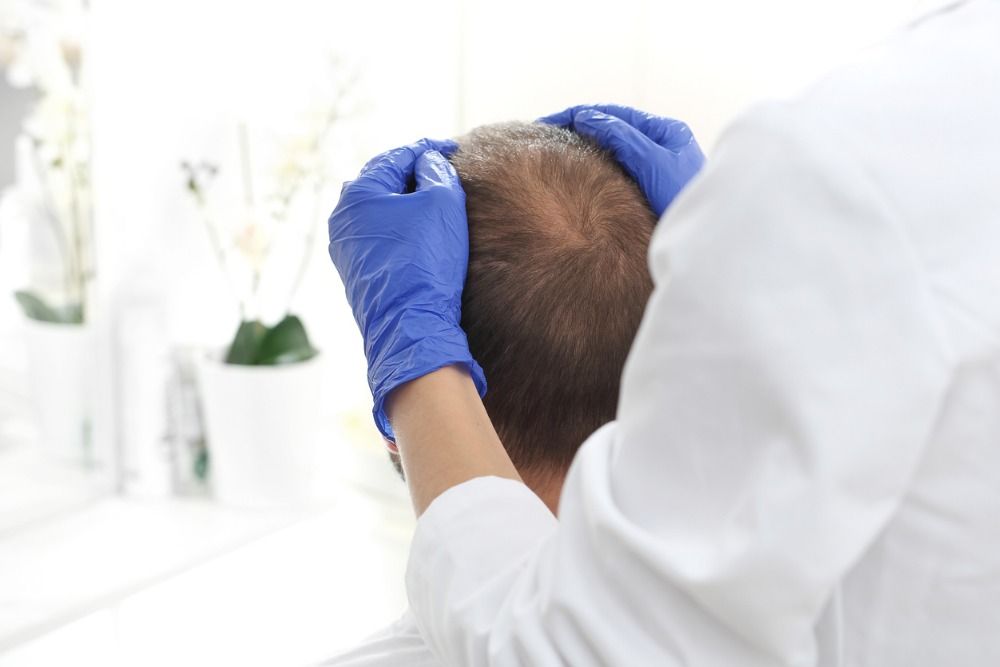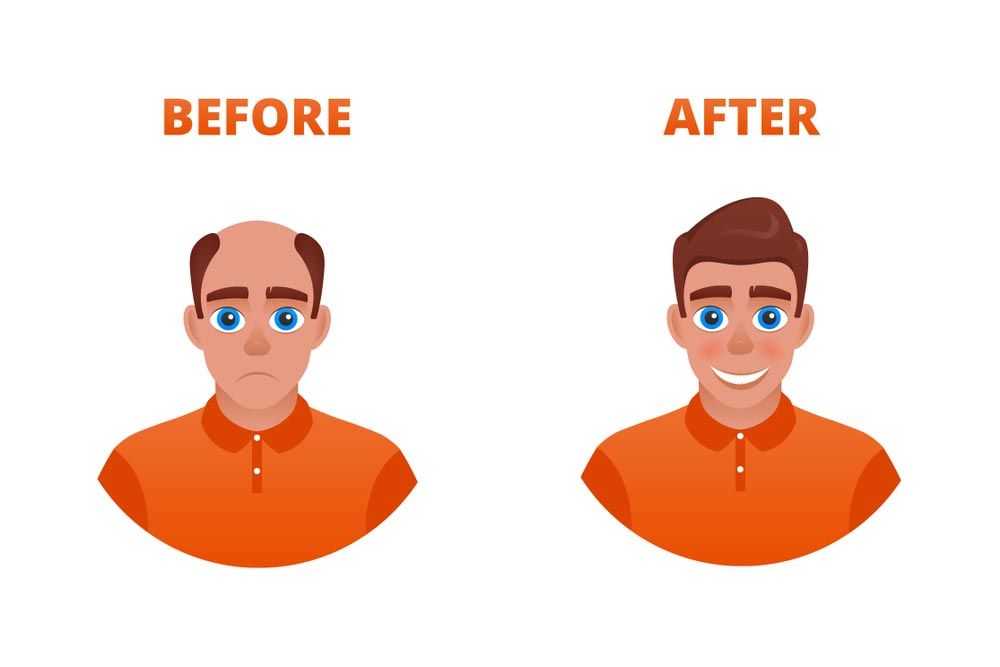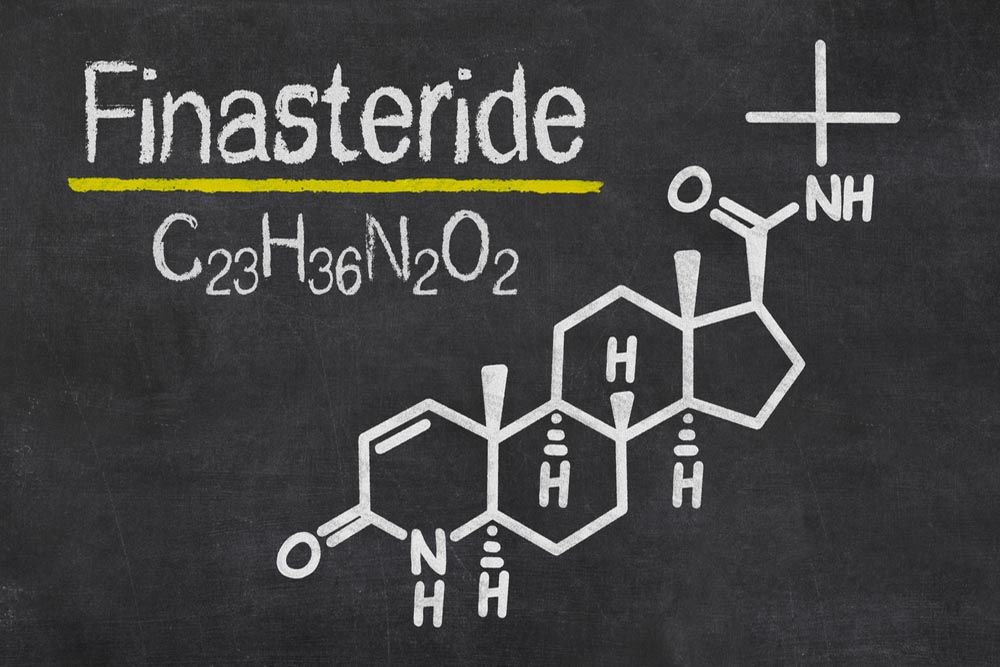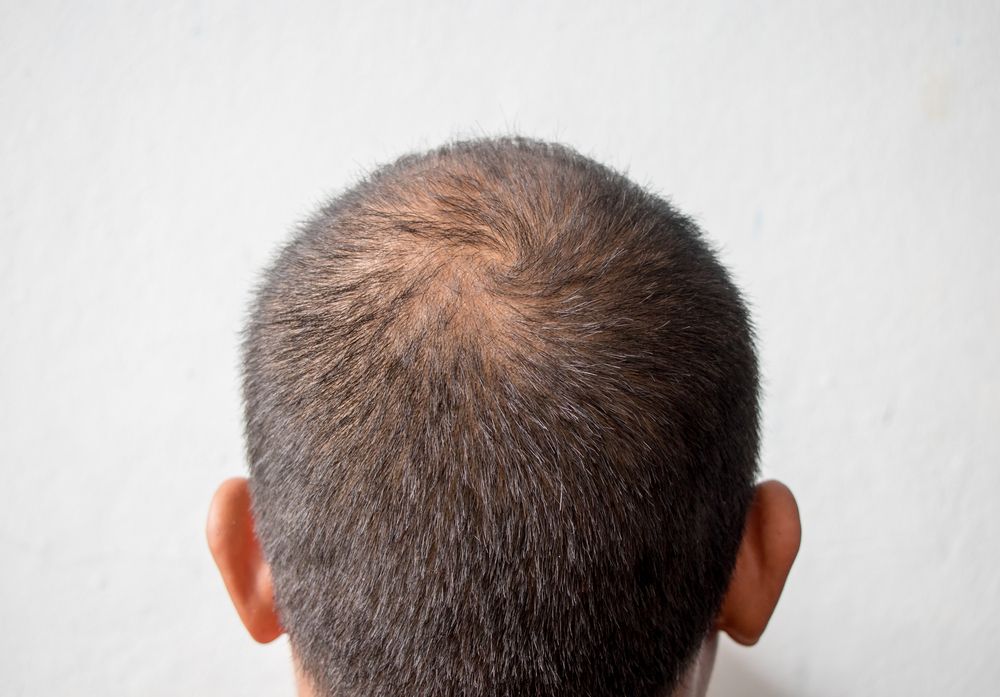Many men and women in the United States struggle with hair loss, including receding hairlines. (Learn More) Fortunately, since Rogaine premiered in 1998, there has been a boom in medicated shampoos with active ingredients ranging from medicine to herbal or natural remedies. (Learn More)
If a medicated shampoo does not show results for slowing a receding hairline or promoting hair growth, work with your dermatologist to determine the next steps to keep your hair. (Learn More)
Hair Loss Treatments Include Great Shampoos
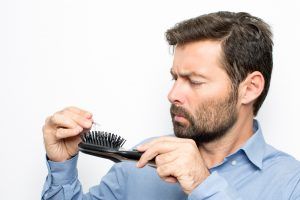
Everyone loses hair. On average, adults lose about 100 hairs per day.
Many American adults, both men and women, experience thinning hair or receding hairlines due to hormonal changes, genetic predisposition, and many other normal reasons. About half of all adults experience this type of hair loss before age 50. You may also lose your hair due to underlying health conditions like diabetes, an infection like ringworm, or medical treatment like chemotherapy.
People who experience hair loss can work with a dermatologist to determine if they have any underlying conditions that require treatment, which can slow hair loss as a side benefit. If you experience hair loss for genetic or hormonal reasons, there are medical treatments like shampoos that could help you slow down your hairline recession. They can even encourage hair growth.
The Best Medicated and Treated Hair Loss Shampoos
The first medicated shampoo, Rogaine, was approved by the United States Food and Drug Administration (FDA) in 1998. The shampoo was such a commercial success that many pharmaceutical companies began to emulate this approach to treatment. Prior to this over-the-counter option, dermatologists would recommend prescription pills or even hair plugs and transplants to manage extensive hair loss.
Medicated shampoos have been shown, in many people, to slow down a receding hairline or part in the hair. For a few users, they even promote new hair growth.
Here are some of the best medicated shampoos for receding hairlines:
- Rogaine (Minoxidil): This is a nonprescription medicated shampoo for both men and women, which is rubbed into the scalp on a daily basis. Due to the active ingredient, it is important to wash your hands after applying it. It can affect other parts of your body if it is spread around.
The first few applications may cause you to shed more hair. If it encourages your hair to grow, the new hairs that appear may be shorter and thinner than your original hair. It is important to stick with Rogaine for at least six months. It may prevent further hair loss and start hair regrowth. - Salicylic acid: There are some generic shampoos with salicylic acid, which is a chemical that occurs naturally in a range of plants from wheat to white willow bark. The chemical can reduce the amount of sebum in your scalp, which is an oil that the skin produces to keep pores clean. Some people produce too much sebum, which can lead to oily skin.
Sebum excretion and collection can collect over time on the scalp, and they can hold large amounts of dihydrotestosterone (DHT), which is the hormone responsible for male pattern baldness (MPB). By reducing how much sebum collects on your scalp, you can reduce how much DHT affects your receding hairline and slow the hair loss process. It can also decrease dandruff and some other minor conditions that affect your hair texture and scalp. - Ketoconazole: This is the most common ingredient found in generic, OTC hair loss shampoos. It was originally designed to control skin fungus, which can encourage rapid hair loss if you have an infection and cause dandruff and skin rash.
If you experience hair loss along with a rash, redness, itching, and other skin problems on your scalp, you may have a skin condition affecting your receding hairline. Work with a dermatologist to determine how serious the condition is. They may prescribe pills or other treatments rather than a medicated shampoo. Many people can use generic shampoos containing ketoconazole to slow or stop their receding hairline. - Pyrithione zinc: This is a metal complex that stops fungal or bacterial cells from dividing, and it is an ingredient in shampoo treatments for seborrheic dermatitis. While this is not a well-studied medication used for more general hair loss, it is quite effective if your hair loss is exacerbated by an underlying skin infection.
It has also been proven effective for general baldness or receding hairlines in clinical studies. One 26-week study showed zinc extract promoted hair growth and slowed hair loss. - Natural extracts: Saw palmetto extract, biotin, niacin, pumpkin seed oil, rosemary oil, green tea extract, cysteine, horsetail extract, and many more herbal or natural extracts can be found in OTC hair loss shampoos. While these are not as extensively studied as other chemicals, some men and women find that using these shampoos regularly slows down their hairline recession. This can be very individual, however, based on personal body chemistry.
If your hair loss does not need prescription treatment, you can use natural shampoos to see if these may be more soothing options for you with fewer side effects.
Many Options to Treat Receding Hairlines
If you have used a medicated shampoo, either OTC or prescription, and not experienced good results, there are other options that can help you slow or stop a receding hairline.
Again, working with a dermatologist is key. Even if you end up using OTC shampoos, getting a dermatologist’s diagnosis can help you understand why you are losing your hair and how quickly you can expect it to progress.
Underlying problems like infections or chronic illnesses require different treatment. Losing your hair can be one sign of more serious issues that should not be ignored. You may end up taking a pill, like Propecia (finasteride).
You may also benefit from other OTC options like laser devices. These include combs and light devices that expose your skin to specific wavelengths of light, which can promote hair growth.
In extreme cases, hair transplants or scalp transplants can add follicles and hair to return your receding hairline to where it was originally. These are extreme procedures and require the oversight of dermatologists and specialists.
References
Hair Loss: Topic Overview. (April 17, 2018). Kaiser Permanente.
Hair Loss: Overview. American Academy of Dermatology Association (AADA).
Hair Loss: Diagnosis and Treatment. (February 12, 2019). Mayo Clinic.
What to Look for in a Men’s Hair Loss Shampoo. For Hims.
The Best Men’s Hair-Loss Treatments and Products, According to Hair-Loss Doctors and Dermatologists. (May 23, 2018). The Strategist, New York Magazine.

